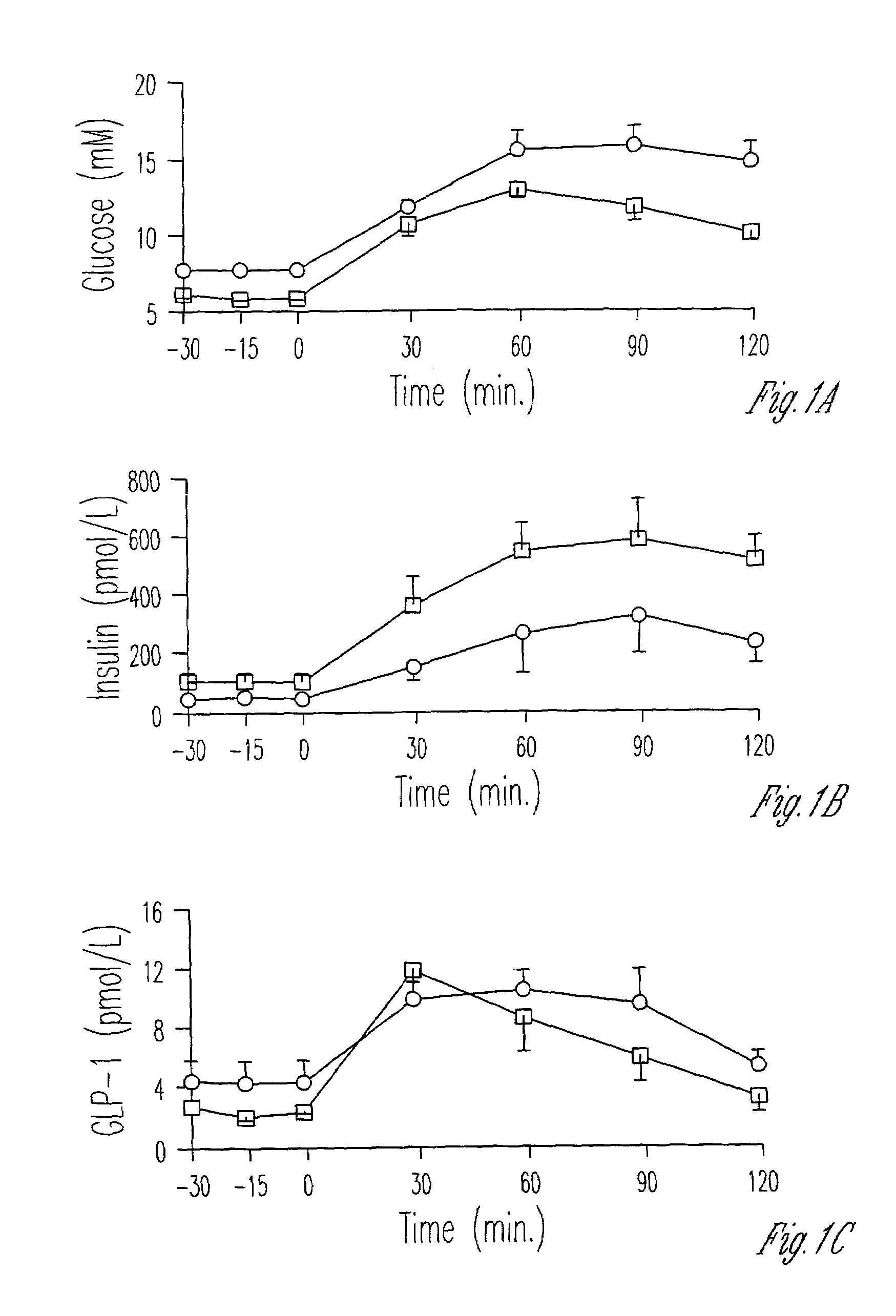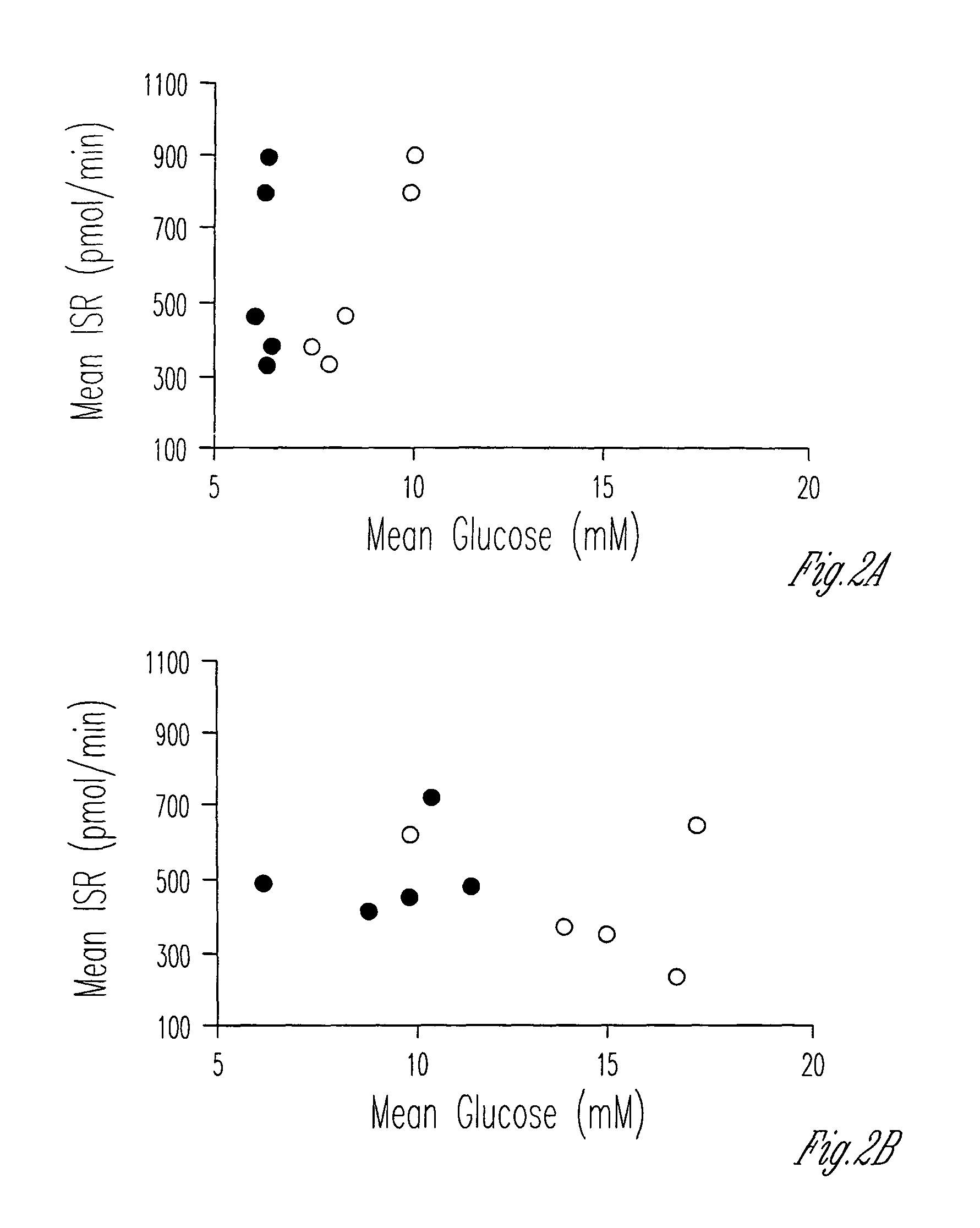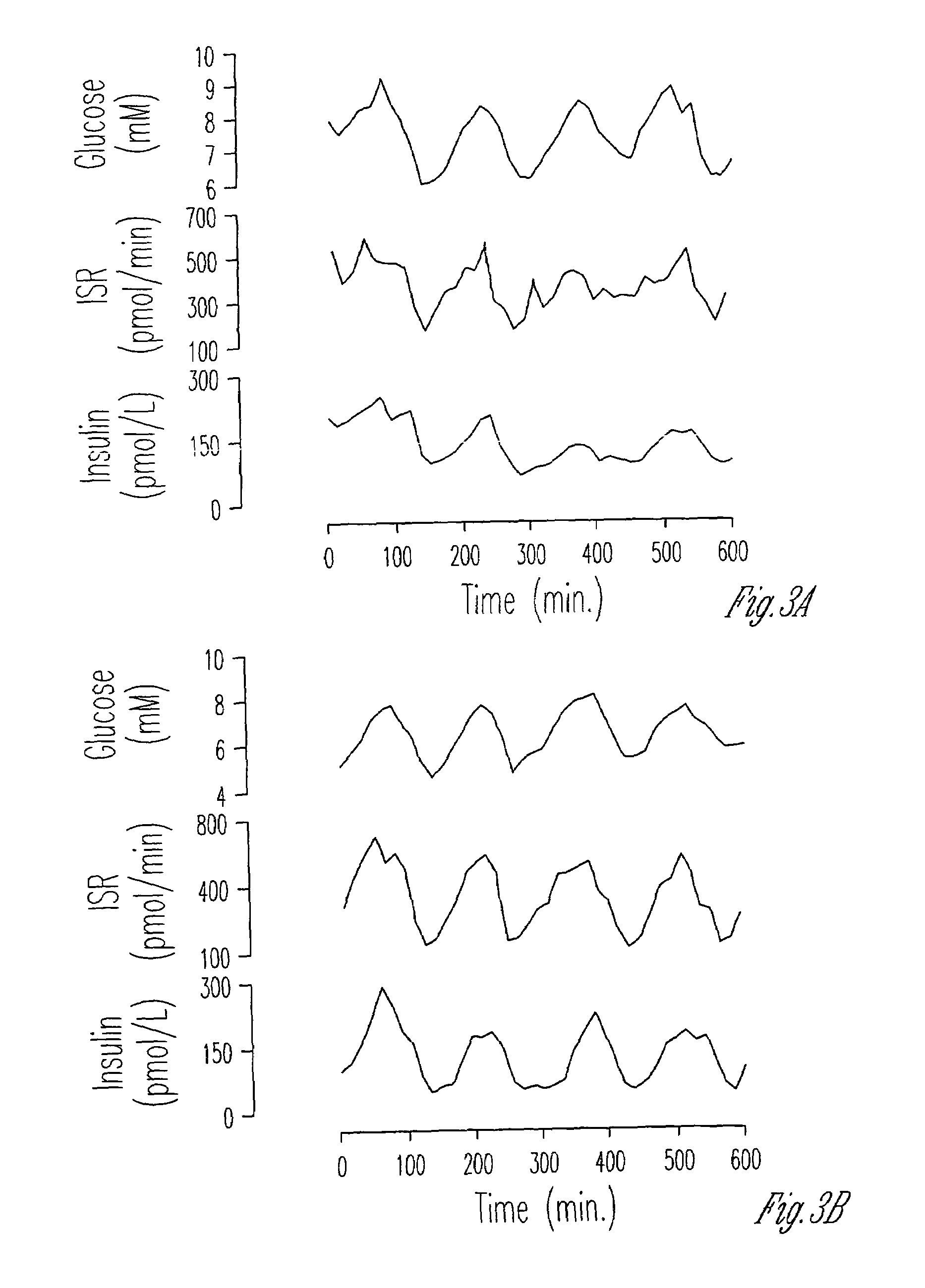Exendin improves β-cell response in subjects with impaired glucose tolerance
a technology of -cells and exendin, which is applied in the direction of peptide/protein ingredients, extracellular fluid disorders, metabolic disorders, etc., can solve the deleterious onset of niddm, the definitive loss of glucose control, and the deterioration of igt glucose control with time, so as to restore improve or normalize -cell sensitivity and function, and reduce plasma insulin level.
- Summary
- Abstract
- Description
- Claims
- Application Information
AI Technical Summary
Benefits of technology
Problems solved by technology
Method used
Image
Examples
examples
[0047]The studies described herein were performed in 10 subjects who were divided into two groups on the basis of their plasma glucose response to an oral glucose tolerance test using the criteria of the World Health Organization to define the degree of glucose tolerance. Five subjects had IGT, and five subjects had NIDDM. The gender, age, body mass index (BMI), basal levels of fasting glucose, 2 hour glucose, fasting insulin, and HBA1c for each subject are presented in Table 2. Diabetic subjects were older than those with IGT, but the groups were matched for by BMI. Mean fasting glucose levels and glycosylated hemoglobin concentrations were lower in the IGT group compared to subjects with NIDDM. Fasting insulin levels did not differ between the groups.
[0048]
TABLE 2Baseline clinical parameters or IGT and NIDDM subjectsFastingFastingglucose2 hr glucoseInsulinGlyco-IDSexAgeBMI(mM)(mM)(pmol / L)hemoglobinIGTD01M5025.75.788.9954.845.8D02F5226.85.9410.5279.805.7D03M4932.25.739.4573.686.3D0...
example 2 (
Oral Glucose Tolerance Test)
[0054]Blood samples were drawn for the measurement of glucose, C-peptide, insulin, glucagon and GLP-1 at 30 minute intervals for 120 minutes after ingestion of 75 g glucose (Boehringer, Mannheim, Mannheim, Germany). Incremental areas under the curve (AUC) from 0 to 120 minutes were calculated for glucose, insulin, C-peptide, glucagon and GLP-1. The glucose concentrations were used to define the degree of glucose intolerance according to the criteria of the World Health Organization. The response of the IGT and NIDDM groups to oral glucose is set forth in Table 3.
[0055]The glucose, insulin and GLP-1 responses of subjects to 75 mg of glucose is shown in FIG. 1. The AUC for glucose from 0 to 120 minutes was lower in the IGT group but the AUC for insulin, C-peptide, glucagon, and GLP-1 did not differ.
[0056]
TABLE 3Response to oral glucose2 hr AUCIGT n = 5NIDDM n = 5Glucose (mM. min / l)1290 ± 41 1628 ± 76* Insulin (pmol. min / L)53,750 ± 10,64826,083 ± 10,047C-pep...
example 3 (
Administration of an Oscillatory Glucose Infusion)
[0057]The peripheral administration of glucose in an oscillatory pattern results in regular oscillations in plasma glucose. In normal subjects, the β-cell is able to detect and respond to repetitive increases and decreases in glucose with parallel changes in insulin secretions. This adjustment of the insulin secretory oscillations to the glucose oscillations is termed entrainment. Lack of entrainment to glucose is an early manifestation of β-cell dysfunction in individuals with IGT and mild NIDDM.
[0058]We used a low-dose oscillatory glucose infusion protocol since it is a very sensitive test of the ability of the β-cell to sense and respond to small changes in plasma glucose concentrations. It tests the integrity of the feedback loop linking glucose and insulin secretion. A normal response requires an intact glucose sensing ability.
[0059]In order to determine whether the β-cells were able to detect and respond to oscillations of gluc...
PUM
| Property | Measurement | Unit |
|---|---|---|
| Molality | aaaaa | aaaaa |
| Molality | aaaaa | aaaaa |
| Molar density | aaaaa | aaaaa |
Abstract
Description
Claims
Application Information
 Login to View More
Login to View More - R&D
- Intellectual Property
- Life Sciences
- Materials
- Tech Scout
- Unparalleled Data Quality
- Higher Quality Content
- 60% Fewer Hallucinations
Browse by: Latest US Patents, China's latest patents, Technical Efficacy Thesaurus, Application Domain, Technology Topic, Popular Technical Reports.
© 2025 PatSnap. All rights reserved.Legal|Privacy policy|Modern Slavery Act Transparency Statement|Sitemap|About US| Contact US: help@patsnap.com



